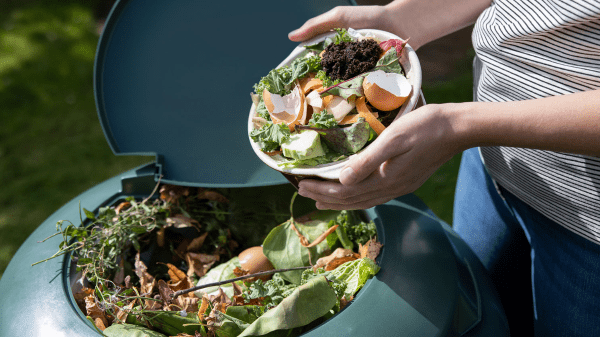One recent development in the packaging revolution: spray-on coating for fruits and vegetables.
Scientists from Rutgers and Harvard universities have developed a biodegradable spray-on wrapper.
Its main ingredient is pullulin, an edible fiber that the Food and Drug Administration lists as “generally recognized as safe.”
“The mixture of the biodegradable polymer and nontoxic solvents can be rinsed off with water,” reports Amelia Keleher on the website Foodtank. New ‘Spray-On Wrapper’ Offers Plastic-Free Food Packaging Alternative – Food Tank
Initial results have been promising. The spray reduced common foodborne pathogens, including E. coli and listeria. It also increased shelf life.

“Avocados with the coating were less likely to rot,” reports Scientific American. Around 50 percent of treated avocados spoiled within a week, as opposed to 90 percent of the avocados that were not treated. The treated fruit was also more likely to stay green inside. Spray-On, Rinse-Off Food ‘Wrapper’ Can Cut Plastic Packaging – Scientific American
The spray-on product is still in the developmental stages, although the researchers are hoping to scale up production to ensure that the material is cost-effective and adaptable to current industry equipment. Then they plan to market it on a larger scale “to companies and customers who are willing to absorb the relatively higher costs of the innovation,” Keleher writes.
Other questions remain—such as whether the spray-on product will have negative environmental consequences. Not all ostensibly “green” packaging is as environmentally friendly as it may claim.
Take home composting. The idea is that you can take your “bioplastic” packaging, dump it on the compost heap that of course you’re supposed to have, and it will break down into something harmless.
Not exactly.
One British study found that “of the biodegradable and compostable plastics tested under different home composting conditions, the majority did not fully disintegrate, including 60% of those that were certified ‘home compostable.’” Frontiers | The Big Compost Experiment: Using citizen science to assess the impact and effectiveness of biodegradable and compostable plastics in UK home composting (frontiersin.org)
With the spray-on coating, the question is what it will break down into after being washed off.
“Although bioplastics use a different feedstock than conventional plastics (usually corn or sugar beets), the thing that makes any feedstock ‘plastic-like’ is a host of chemicals that give the end product certain characteristics, and bioplastics and compostable plastics contain just as many of these as conventional plastics. These chemicals are a mix of known and unknown, and their toxicity varies,” says the website Beyond Plastics. Bad News – Bioplastics Are NOT A Solution To Plastic Pollution — Beyond Plastics – Working To End Single-Use Plastic Pollution
Nishad Jayasundara, an environmental toxicologist at Duke University who was not involved in the study, wants to see more safety testing about the spray-on coating. He told Scientific American: “The primary thought whenever you see a newly synthesized product is ‘Do we know enough about it?’”
In short, this product is promising. But it faces a common difficulty: will the solution to a problem just create more problems of its own?



